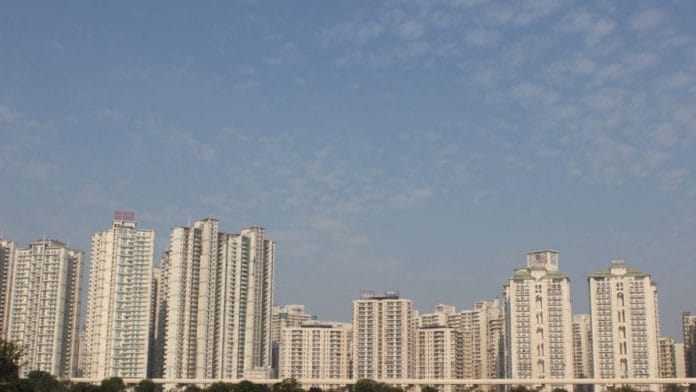Thank you dear subscribers, we are overwhelmed with your response.
Your Turn is a unique section from ThePrint featuring points of view from its subscribers. If you are a subscriber, have a point of view, please send it to us. If not, do subscribe here: https://englishdev.theprint.in/subscribe/
Drive through any of the big cities in India or even Tier-II cities, you will always see religious shrines in the middle of the road and sometimes entire road widening exercises are abandoned due the presence of religious sites in close proximity. This creates bottlenecks for traffic and thereby rendering the entire project meaningless. From my personal observations, I’ve noticed roads flanking both sides of a temple, as the fear of demolishing a temple, which could hurt public sentiment and stir up political turmoil, prevents any further action. Some religious shrines are so small that they are not noticeable until you come close and pose significant challenges to drivers. In the present political climate, which is highly religious, it becomes increasingly challenging for city planners to engage in substantial discussions about the project’s scope. Opposition often becomes entrenched, and at times, even organizes sit-in protests. When religious places remain on roads it also causes inconvenience to devotees as they have the navigate traffic to visit their shrines. In the existing circumstances, there are no victors. Everyone continues with their life echoing the old Hindi saying “chalta hai”. Some even humorously remark that this is just the way things operate in India.
To address the challenges of urban infrastructure, it is essential to consider alternative modes of transport. Buses, not metros, have been highlighted as a key solution to improving urban transport efficiency and reducing congestion.
A more effective solution to this enduring issue could be one where all parties are satisfied. This could involve relocating the entire structure away from the road, thereby facilitating smoother traffic flow and providing devotees with easier access to their religious shrines. In a recent instance in 2018, Shanghai witnessed the relocation of a five-story building by 62 meters to accommodate new construction projects in the city. The procedure involves excavating around the structure and placing mobile units beneath it. Once these units are installed throughout the building, the entire structure is initially elevated and then gradually relocated to the desired location at a very slow pace. It took a full 18 days to shift the structure a mere 62 meters. This highlights the precision and delicacy with which the robotic arms operate to maintain the integrity of the structure, which bears the weight of its historical significance. The rapid development in Shanghai sparked concerns among residents about the potential loss of their heritage. This led to a desire to conserve some aspects of it, which in turn inspired the creation of a new technology by Shanghai Evolution Shift. This entire process reaffirms the age-old adage, ‘Necessity is the mother of invention. Considering the examples above where large multi-story buildings were relocated, moving the relatively smaller and lighter religious structures in big cities should be a comparatively simpler task. If executed correctly, this method could be replicated for other historical and heritage sites that the city or its residents consider significant. The technology also allows for the rotation of the building. This means that if previous constructions did not adhere to traditional architectural systems, they can be rectified. In some instances, they can even be oriented in a more desirable direction. The technology is not the ideal, it is a preferable alternative to demolition or leaving these structures untouched amidst bustling roads. It presents an opportunity to apply modern solutions to age-old challenges. The company has not disclosed the cost of this technology, and there may be instances of exceeding the budget due to the presence of multiple religious sites in a single road expansion project. However, in the long run, the reduction in traffic congestion and the enhancement in fuel efficiency resulting from increased average vehicle speed make it a worthwhile investment.
Like any proposal, this could potentially open a new Pandora’s Box, leading to a surge in requests for relocating existing residences, as opposed to the earlier practice of providing financial compensation. To prevent this, urban planners could anticipate such issues and establish guidelines that define what qualifies as a heritage site. They could also determine which religious sites are eligible for relocation based on their historical or cultural importance. A potential unexpected benefit of this approach could be the reduction of religious tensions among communities. This is because it eliminates any perceived bias among administrators who may be accused of favoring the shrines of one community over another. Furthermore, the protection of religious shrines would no longer be dependent on the party currently in power at the municipal or state government level.
These pieces are being published as they have been received – they have not been edited/fact-checked by ThePrint.


